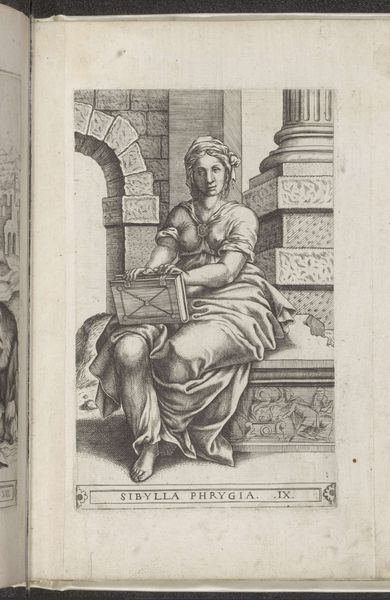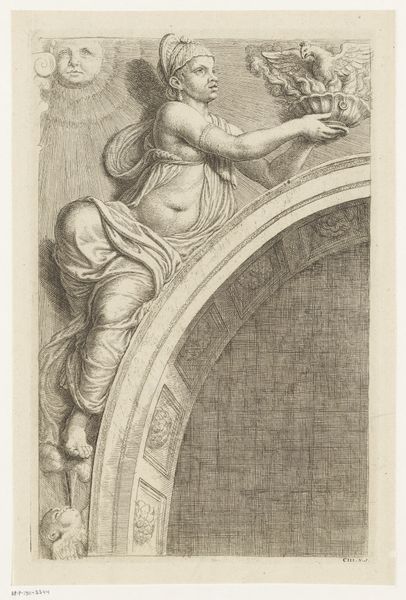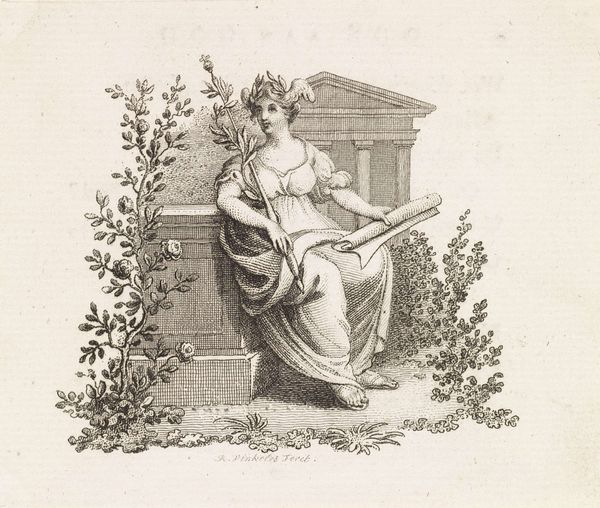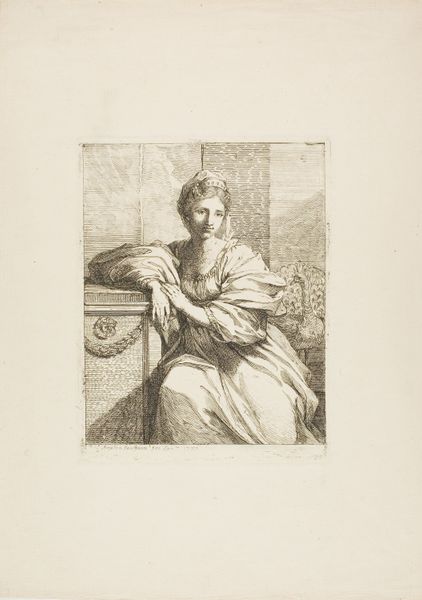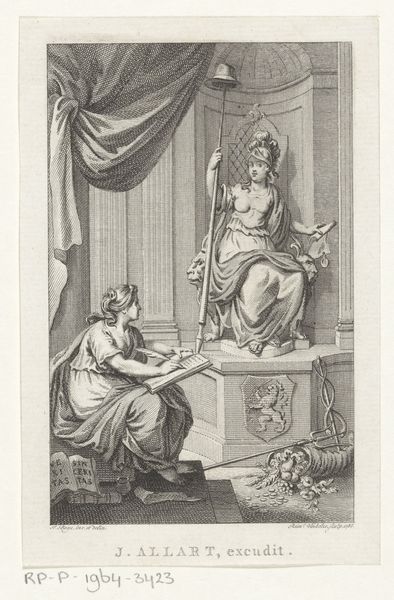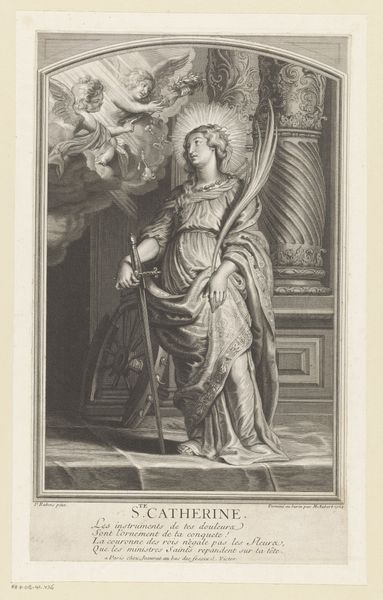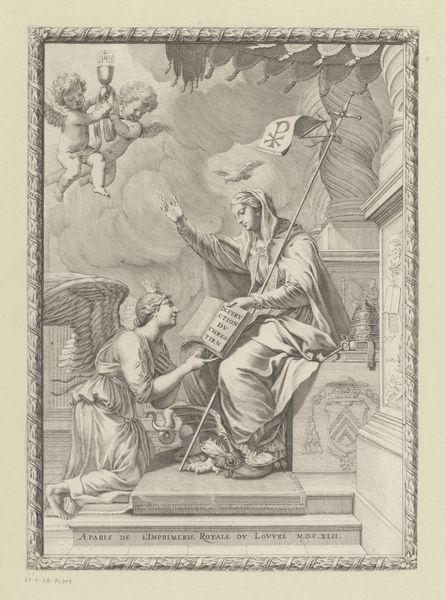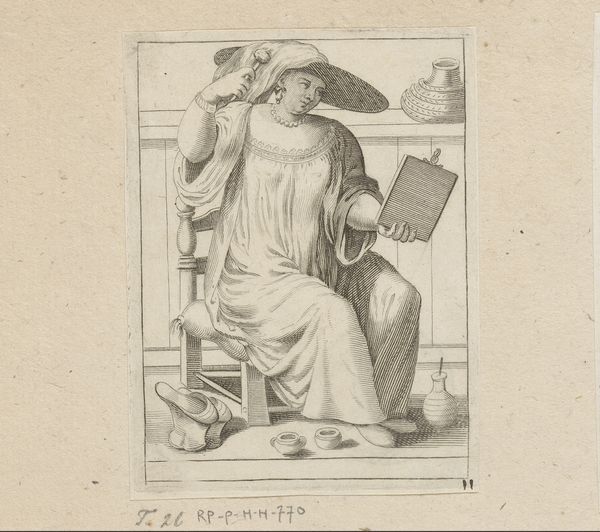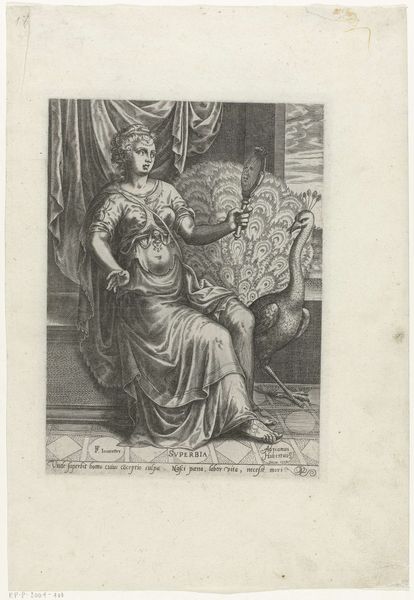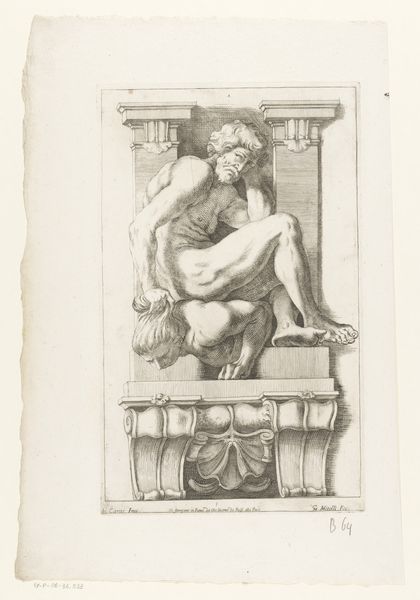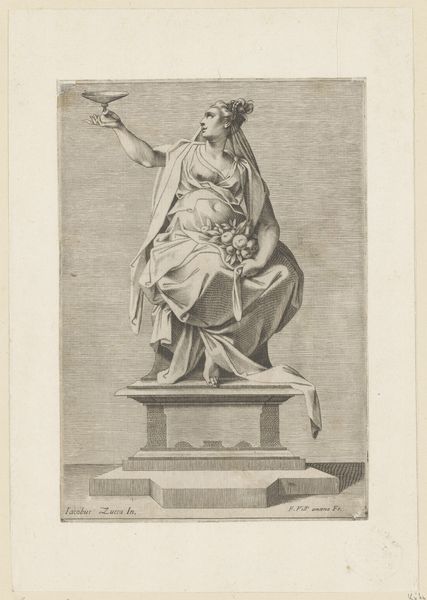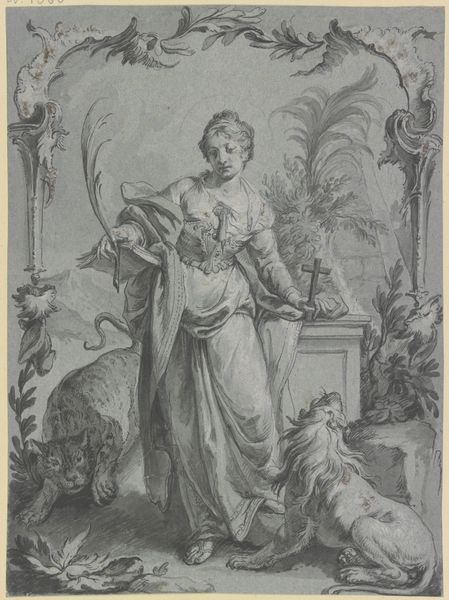
print, engraving
#
portrait
#
baroque
# print
#
figuration
#
engraving
Dimensions: height 128 mm, width 77 mm
Copyright: Rijks Museum: Open Domain
Curator: Welcome. Today, we're exploring "Vrouw zittend op een troon," which translates to "Woman sitting on a throne." Created between 1633 and 1650, this Baroque engraving is the work of Cornelis Bloemaert and resides here at the Rijksmuseum. Editor: Immediately striking is the way Bloemaert handles light here. It's all delicate etching, lending this regal lady a certain ephemeral, dreamlike quality. Curator: Indeed. Observe how Bloemaert masterfully uses line work to create both form and texture. The delicate hatching defines the folds of her garments and the ornamentation of her throne, establishing a clear visual hierarchy. The crisp architectural backdrop contrasts against her serene posture. Editor: The architectural setting feels like a stage set almost! It's all so precisely constructed, which reinforces the subject’s detached mood. I wonder about the inclusion of the dog…a symbol of loyalty, or simply domestic bliss in contrast to such formal grandeur? Curator: Given the symbolic language common during the Baroque period, that may be the artist's intended function. Her calm demeanor seems intentional—a classical balance. Further, notice how she's positioned with what seems to be a stylus poised above a tablet... Perhaps portraying an allegorical Muse? Editor: Muses are eternally fashionable! Her fashion certainly tells a tale. It makes you think about who was the intended audience for prints like this. There’s a world of intellect and wealth on display. The architecture, the clothing…it's like a lifestyle advertisement for sophisticated people. Curator: Precisely. As a print, this artwork allowed for broader dissemination of Bloemaert's artistry, reaching beyond the elite circles to influence a growing middle class with aspirations of refinement. Editor: Seeing it up close really underscores the Baroque tendency towards grandeur. Bloemaert wasn’t only making art, he was manufacturing social ideals and perhaps also aspirations! Curator: A keen observation. By dissecting the artwork's structural and symbolic elements, we unlock its complex layers of meaning, and further appreciate the intention that the artist invested within the printmaking craft. Editor: Yeah. Peering through all these delicate etched lines suddenly shows an artist in a certain historical context—a clever and deliberate contributor to both aesthetics and aspirations in his world. I definitely see the power in simplicity now.
Comments
No comments
Be the first to comment and join the conversation on the ultimate creative platform.
